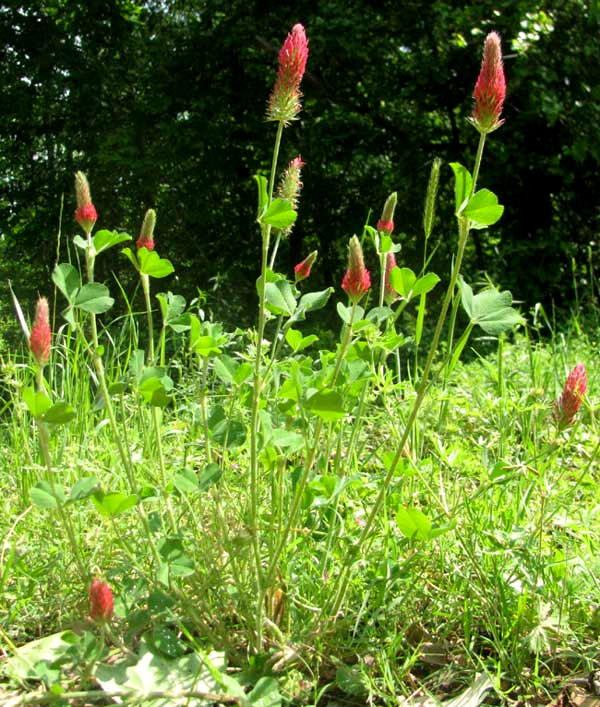Excerpts from Jim Conrad's
Naturalist Newsletter

from the the May 6, 2012 Newsletter issued from the woods of the Loess Hill Region a few miles east of Natchez, Mississippi, USA
CRIMSON CLOVER
Along lots of landscaped roadsides throughout the US Southeast this spring you see what's shown above. On the Natchez Trace Parkway between Natchez and Nashville for mile after mile the roadside is bright red with that plant, which is Crimson Clover, TRIFOLIUM INCARNATUM. Parkway officials must manage their roadsides to encourage Crimson Clover's majestic spring appearance because the species tends to disappear, like most wildflowers, with the frequent mowing and herbicide use practiced along most highways these days. When I was younger many roadsides announced spring with great, glorious blossomings of Crimson Clover, where now there is none.
Crimson Clover, despite looking so different from other plants we think of as clovers, is a real clover, which means that it's a member of the genus Trifolium, in the Bean Family. If you look closely at a single flower you can see the typical "papilionaceous" Bean-Family-type blossom structure, with the oversized "standard" petal curving away from the smaller "wings" and "keel," as shown below:

Crimson Clover was introduced into North America from Europe as cattle fodder and to improve soil. As a groundcover it retards erosion plus its roots bear nitrogen-fixing mycorrhiza. It's escaped throughout the US but does much better in the southern states.